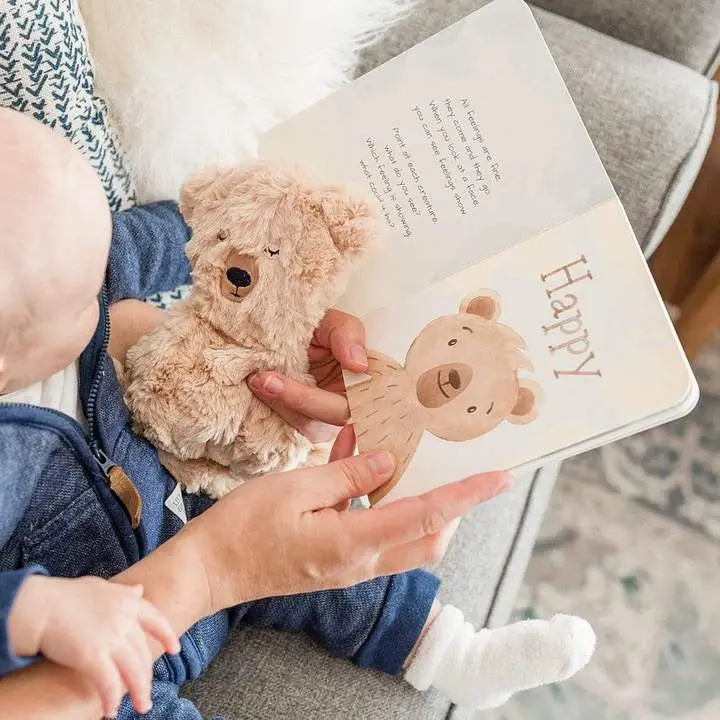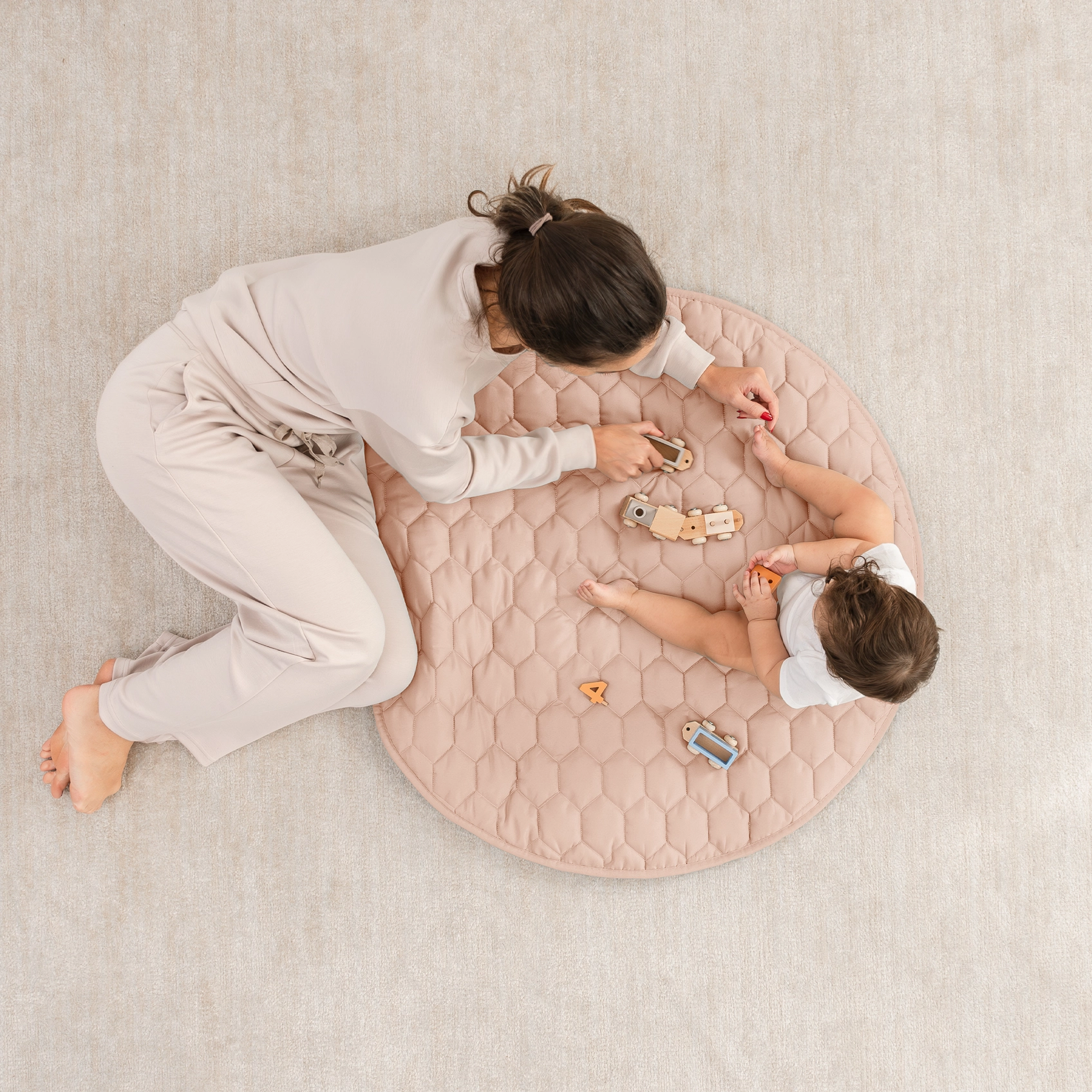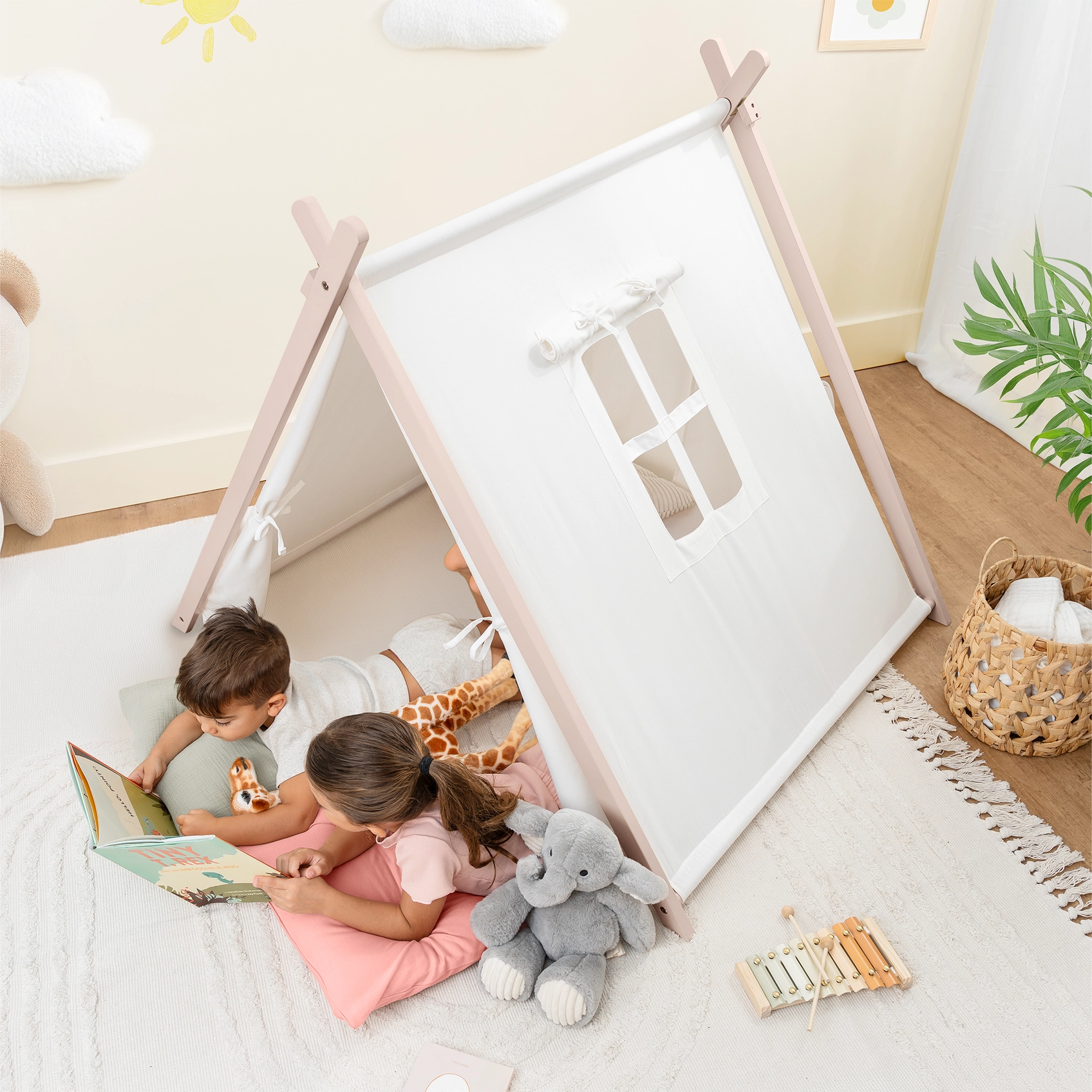Language Development through Play
- LeCha Brown

- Feb 24
- 6 min read
Updated: Feb 24
As a new parent, one of the most exciting milestones you'll witness is your little one's development of language. From the moment they are born, your little one is absorbing sounds, processing speech patterns, and learning how to communicate with the world around them. Language development doesn’t happen overnight, it’s a gradual process, and there are guided stages along the way. Understanding how language skills progress and knowing how to encourage this development at each stage can help you foster your little one's communication abilities in an engaging way.
For starters, lets quickly get an overview of the milestones of speech and language development from birth to 48 months. I will cover some of best practices I have been able to research, and share toys, games, and activities that I have found that will support your little one's growth through play-based learning.
Speech and Language Milestones from 0-48 Months
0-6 Months: Foundations
In the first six months of life, our sweet little babies are soaking up everything around them. They are listening to voices, unknowingly becoming familiar with the rhythm of speech, and starting to communicate in their own way through non-verbal expressions. While they aren’t actually speaking yet, they are laying the foundation for language development.

Milestones:
0-2 months: Your baby will communicate primarily through crying to express their needs, and they begin to calm when they hear familiar voices. They may also start turning their head toward sounds.
2-4 months: They will begin cooing and making simple vowel sounds like "oo" and "ah." They may start responding to familiar sounds with smiles or sounds of their own.
4-6 months: By this age, they will begin to babble, making combinations of consonant and vowel sounds like "ba-ba" or "da-da." They also start recognizing their name and responding to it.

Things you should do with them:
Talk to your baby constantly: Describe what you're doing, even the simplest tasks. For example, “I’m putting on your socks now” or “Look, a red ball!” This helps your little one associate words with objects and actions.
Imitate sounds: When your little one babbles or coos, imitate their sounds to build a sense of interaction. This two-way communication encourages them to understand that language has meaning.
Use high-pitched, expressive speech: Babies are more likely to engage with and respond to a lively, sing-song voice, which helps draw their attention to language.
Activities and Toys to Support Language Development at Home:
Sing to your baby: Lullabies, nursery rhymes, and even simple tunes expose babies to rhythm, sound, and vocabulary.
Read simple picture books: Board books with large pictures and simple text can introduce your baby to new words while developing visual skills.
6-12 Months: Sound Exploration and Understanding
By the time your little reaches six months, their ability to make sounds will begin to expand, and they will start to understand the basics of communication.

Milestones:
6-9 months: They will begin to use a variety of consonant-vowel combinations, such as "ba-ba," "da-da," or "ma-ma." They may also start responding to simple gestures, like waving or shaking their head to indicate "no."
9-12 months: At this stage, they will start imitating sounds and actions more intentionally. They may say their first words like "mama" or "dada," and they understand simple commands like “wave bye-bye” or “give me the toy.”
Things You Should Do With Them:
Expand on their sounds: If your little babbles, try to expand on it by saying more words. For instance, if they say “ba-ba,” you could respond with “Yes, that’s a ball!” This helps reinforce new vocabulary.
Introduce gestures: Along with words, start using gestures like pointing to objects, waving, or nodding to help reinforce meaning.
Narrate everyday activities: Whether you're feeding your baby or changing their diaper, narrating your actions helps them associate words with actions and objects.

Activities and Toys to Support Language Development at Home:
Interactive books: Look for board books with textures, flaps, or sounds. These can engage your baby visually and physically while associating objects with their names.
Musical toys: Simple instruments like maracas or tambourines not only encourage sensory play but also develop listening skills and rhythm.
Animal toys or figurines: These toys can help babies learn animal names and sounds, making it easier for them to build vocabulary.
12-18 Months: First Words and Simple Communication
During this stage, your little one will start saying their first words and will begin to use gestures and facial expressions to communicate their needs.

Milestones:
12-15 months: By now, many (not all) will have a few words in their vocabulary, such as “mama,” “dada,” “dog,” or “ball.” They will also understand a lot more words and can follow simple instructions like “give me the ball.”
15-18 months: Your little one may use more words and may begin to combine two words into simple phrases like “want cookie” or “big truck.” Their vocabulary typically expands to 50-100 words by 18 months.
Things You Should Do With Them:
Use simple, clear language: Speak in short sentences and repeat words frequently to help reinforce understanding. For example, if they say “dog,” respond with “Yes, that’s a dog. It’s barking!”
Encourage imitation: If your your little says a word, try to say it back to them correctly, expanding on it. If they say “up,” you can say, “Yes, you want to go up. Let’s go up the stairs.”
Practice turn-taking: Model turn-taking by waiting for your baby to make a sound or gesture, and then responding. This helps them learn the back-and-forth nature of conversation.
Activities and Toys to Support Language Development at Home:
Stacking toys or shape sorters: These toys help with cognitive development and can also be used to teach words like “up,” “down,” “big,” and “small.”
Pretend play sets (e.g., kitchen or doctor sets): These toys encourage early role-playing, where your little one can start using words in context and understand the concepts behind them.
Picture books: Books with familiar objects and animals can help reinforce vocabulary. Ask them, “Where’s the cat?” or “What’s that noise?”
18-24 Months: Vocabulary Explosion and Early Sentences
By the time your toddler is two, you’ll see a significant increase in their vocabulary. They may start using simple sentences and are better able to express their needs and ideas.

Milestones:
18-21 months: At this stage, toddlers start to use two-word combinations like “big truck” or “more juice.” They are learning to make requests, express preferences, and start to grasp basic grammar.
21-24 months: Vocabulary continues to grow, and they may begin to use 100-200 words. They may start forming three-word sentences and can follow simple directions like “put the toy in the box.”
Things You Should Do With Them:
Model full sentences: When your toddler says a word or short phrase, expand it into a longer sentence. For example, if they say “dog,” you can say, “Yes, that’s a brown dog running fast.”
Engage in simple conversations: Encourage them to tell you about their day or describe what they see. For example, ask questions like, “What did you do at the park today?”
Play alongside your child: Sit and play with toys together, narrating your actions. This reinforces language by making it part of an interactive experience.
Activities and Toys to Support Language Development at Home:
Pretend play toys: Simple kitchen sets, dolls, and stuffed animals help them engage in more complex speech. They learn to use words in context (e.g., “feed the baby” or “cook the food”).
Books with simple stories: Stories that have repetitive text and clear pictures help them learn new words and understand simple plots.
Puzzles and matching games: These help with word association and build vocabulary around categories like animals, colors, and shapes.
24-48 Months: Sentences, Conversations, and Stories
Between the ages of 2 and 4, your toddler's language skills will continue to rapidly grow. By now, they are using full sentences, holding conversations, and beginning to understand basic concepts like time, size, and relationships.

Milestones:
2-3 years: Vocabulary grows to 200-1,000 words, and they begin using longer, more complex sentences. They can also answer “who,” “what,” and “where” questions and start asking their own questions.
3-4 years: They begin to tell short stories, and their grammar improves. They understand basic concepts like “yesterday,” “tomorrow,” and “under” or “over.”
Things You Should Do With Them:
Engage in extended conversations: Ask your child open-ended questions and encourage them to share their thoughts. For example, “What did you do today?” or “How did the character in the book feel?”
Read together regularly: Reading books with rich language and engaging stories will help them develop a deeper understanding of words and sentence structure.
Use everyday moments to teach new concepts: When out on a walk or at the grocery store, introduce new vocabulary related to what you see, like “tree,” “car,” “apple,” and “fast.”
Activities and Toys to Support Language Development:
Storytelling games: Use toys or picture cards to create stories together. This activity encourages sequencing and sentence structure.
Interactive books with questions and puzzles: Choose books that ask questions about the story, such as “What do you think will happen next?”
Arts and crafts: Encourage your child to describe their creations. Ask, “What colors did you use?” or “What is this shape?”
As you can see, language development happens in stages, and each stage builds upon the previous one. By being actively engaged in your little one's communication, providing a rich environment of language and play, and responding to their efforts to communicate, you are giving them the tools they need for successful language development. Remember, every child is unique, so celebrate your child’s progress at their own pace! With love, patience, and plenty of activities, you’re setting the stage for strong communication skills that will continue to thrive.






Comments